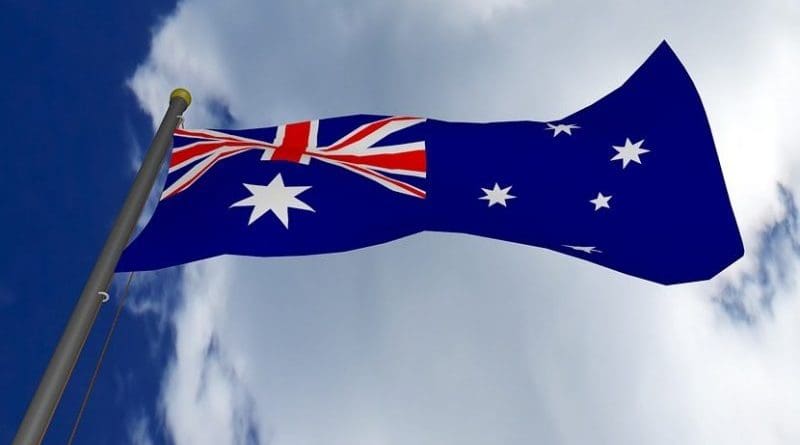Australia Contemplates A New Parliamentary ‘Voice’, But It May Have A Dark Side – Analysis
One of Australian Prime Minister Anthony Albanese’s primary election promises last year was to hold a referendum on the question of establishing an “Aboriginal and Torres Strait Islander’s Voice” within the federal parliament to provide constitutional recognition to indigenous Australians and an avenue to give advice on how indigenous lives could be improved. To pass, this requires an overall majority of voters to approve the plebiscite, along with a majority of votes in at least four out of the six states.
Setting up a ‘voice’ within the Australian parliament was a key recommendation of the Uluru Statement from the Heart, a 12-paragraph document written by and endorsed by 250 Aboriginal and Torres Strait Islander leaders in 2017. Within the document was a call to change the Constitution to improve the representation of indigenous Australian views to the parliament.
If successful, the referendum, which is due sometime later this year or in early 2024, would enable the present government through the parliament to determine and structure the resulting advisory body the way it wants. To date, the Albanese government has not given any specifics about how it would actually be structured and operate.
Traditionally, the Australian Electoral Office (AEO) posts to voters a summary of both the ‘yes’ and ‘no’ arguments before a referendum, with opposing arguments written by parliamentarians on either side of the issue. However, Albanese has proposed eliminating the ‘yes/no’ case pamphlets, claiming that ‘modern technology’ allows parliamentarians to express their views directly to the public, knowhow which was unavailable earlier.
Under existing laws, the government is required to submit to the public the ‘yes/no’ cases. However, the Albanese government is repealing this through the Referendum (Machinery Provisions) Amendment Bill 2022. If the referendum succeeds, this move could potentially open up a door for a constitutional challenge to the validity of the result.
With Australia seeing much open division, which led to hostility during the Covid-19 pandemic, the referendum could potentially develop into unhealthy polarization, with those who support a ‘yes’ vote branding the ‘no’ voters as racist. At worst, it could either intimidate voters or lead to a counterintuitive result, in which a silent majority just votes ‘no’. Either way, this will not be healthy for society and democracy.
Dark side
Without arguing the actual merits of implementation of The Voice, there is a dark side with issues be collateral to its existence, and must be given due consideration.
With the federal parliament having so much jurisdiction over the structure and procedures, instead of having these procedures codified into law, there is a risk this quasi-third chamber of parliament could change in its purpose and/or influence over time. As social activism narratives change, governments down the line would have the power to either enhance or decrease its scope and influence. For example, a government unsympathetic to activist narratives could easily downgrade the body’s importance. Alternatively, a government overly sympathetic to new activist narratives could enhance the power of The Voice, in ways not imagined at this point of time.
Questions over representation
Although some 250 indigenous Australian leaders signed the Uluru Statement, this doesn’t guarantee that it is a widely shared view or priority among indigenous Australians. Those publicly active are primarily from urban areas and may hold different views from to those in remote areas. There need to be more formal community consultations. A number of delegates walked out of the Uluru gathering, claiming they were threatened by those with vested interests.
Rising false indigenous claims
The 2021 census found an increasing number of Australians claiming indigenous Australian heritage, with a 25 percent increase from the 2016 census, in which 812,878 self-identified as indigenous. Some believe the indigenous population in Australia to actually be around 300,000. The Commonwealth’s three-point criteria for Indigenous identification, which includes: Indigenous by descent, self-identification as an Indigenous person, and acceptance by a registered Indigenous organization.
Critics argue that if those self-identifying as indigenous were screened against Commonwealth criteria, the actual number of would be far less, saying this has created opportunities for activists to seek political leverage through self-identification. In turn, the critics say, that has led to those who disagree with the political views of the activists to be pushed around. There is concern that some activists are actually exploiting the indigenous communities for political advancement.
The Aboriginal and Torres Strait Islander Commission (ATSIC) has been at the center of allegations of corruption, with irregularities with the spending of funding. The commission has been notorious in controlling the voices of indigenous communities. Green politicians have infiltrated indigenous organizations, and are accused of using the platform for their political causes rather than for the wellbeing of indigenous communities. For example, the annual criticism of Australia Day, or Invasion Day, as activists call it, is not centered upon the mainstream indigenous communities. This raises concerns about how members of The Voice will selected, elected, or appointed to the body.
Finally, issues concerning poverty, poor life expectancy, public health have not been solved by other initiatives focused upon the plight of indigenous people. The Aboriginal and Torres Strait Island Commission was disbanded in 2005 for falling to resolve these issues and assist indigenous Australians iin attaining better lives. Before ATSIC was the Aboriginal Development Commission (ADC). After ATSIC was the National Indigenous Council (NIC). The question here is what can The Voice achieve that the ADC, ATSIC, and the NIC couldn’t?
Originally published in the Asia Sentinel

